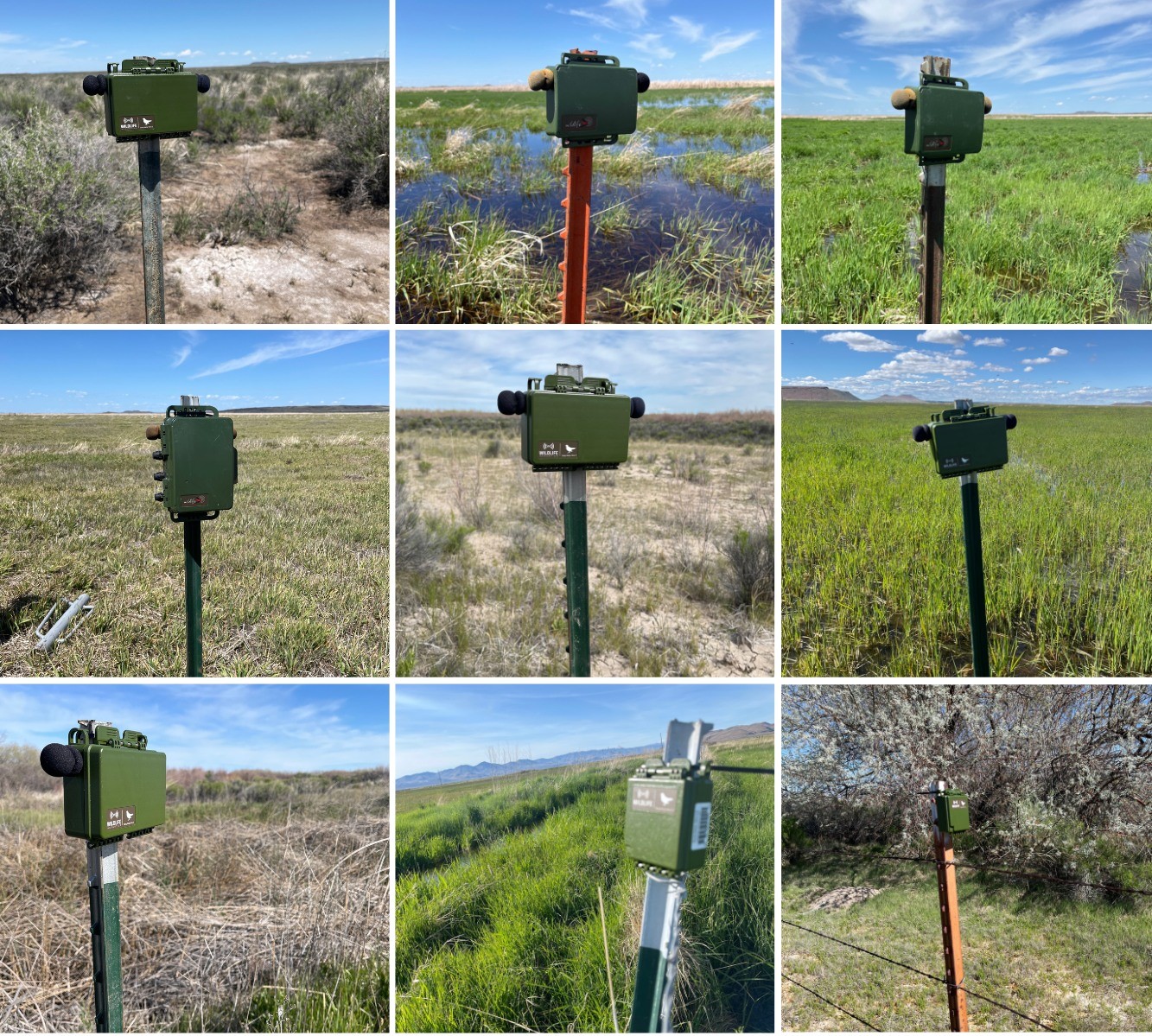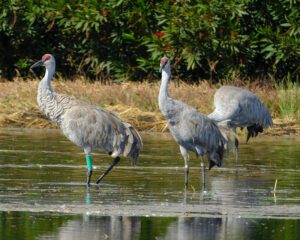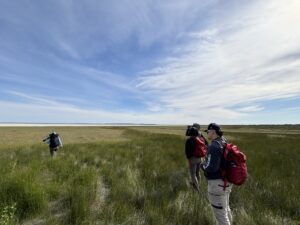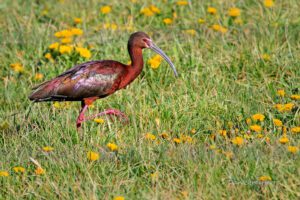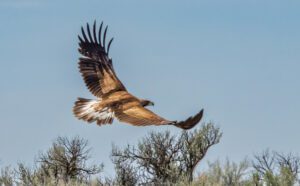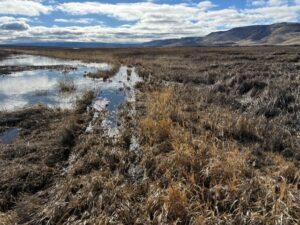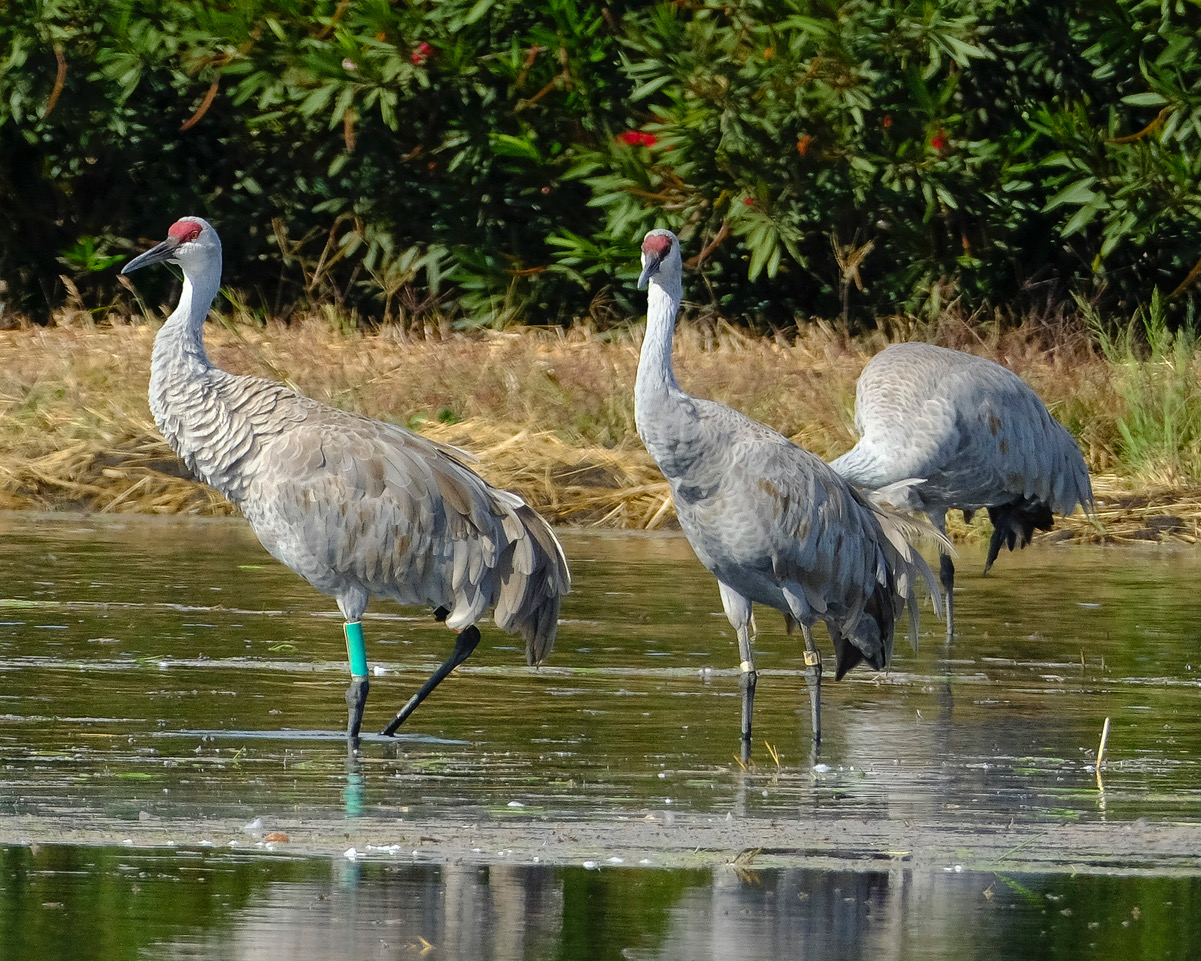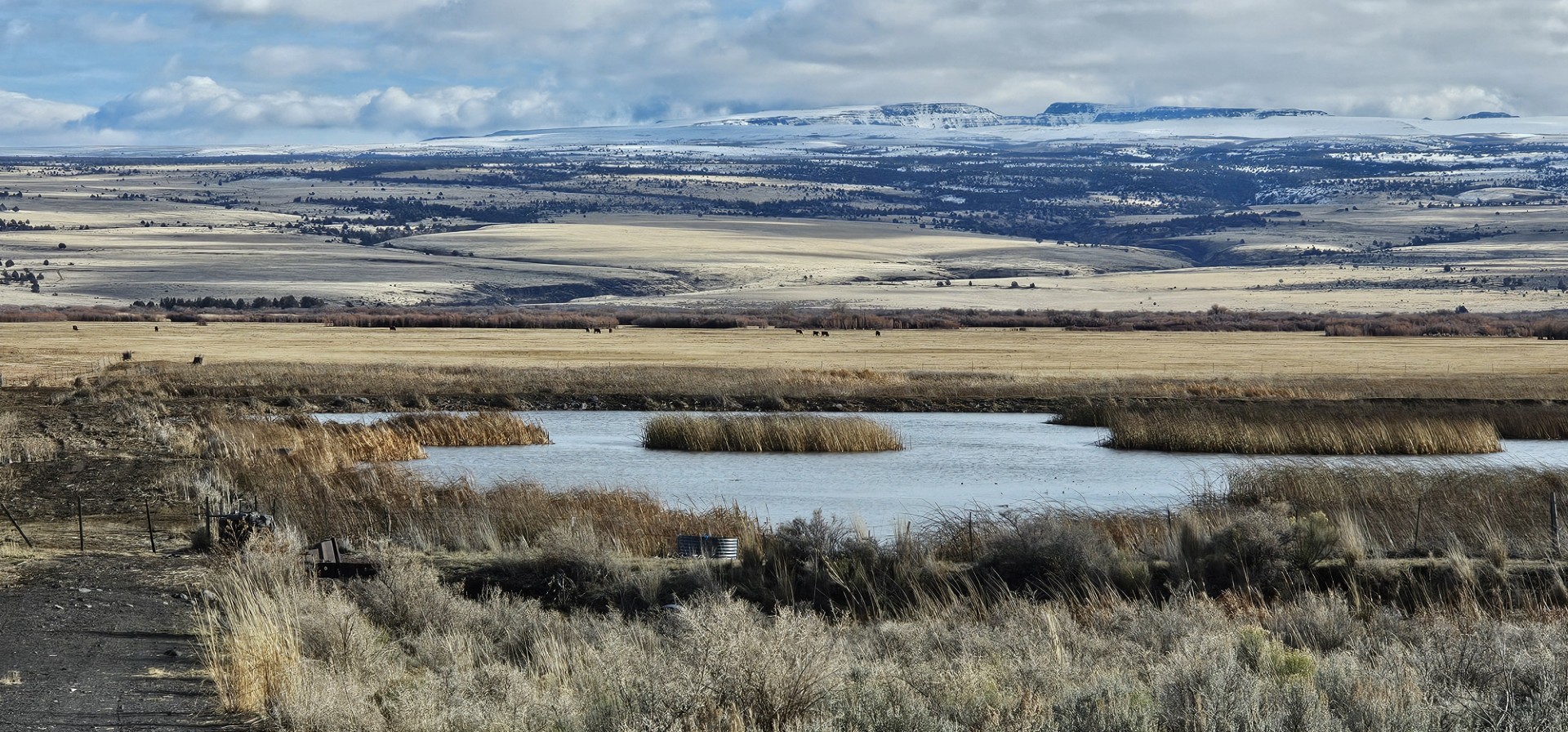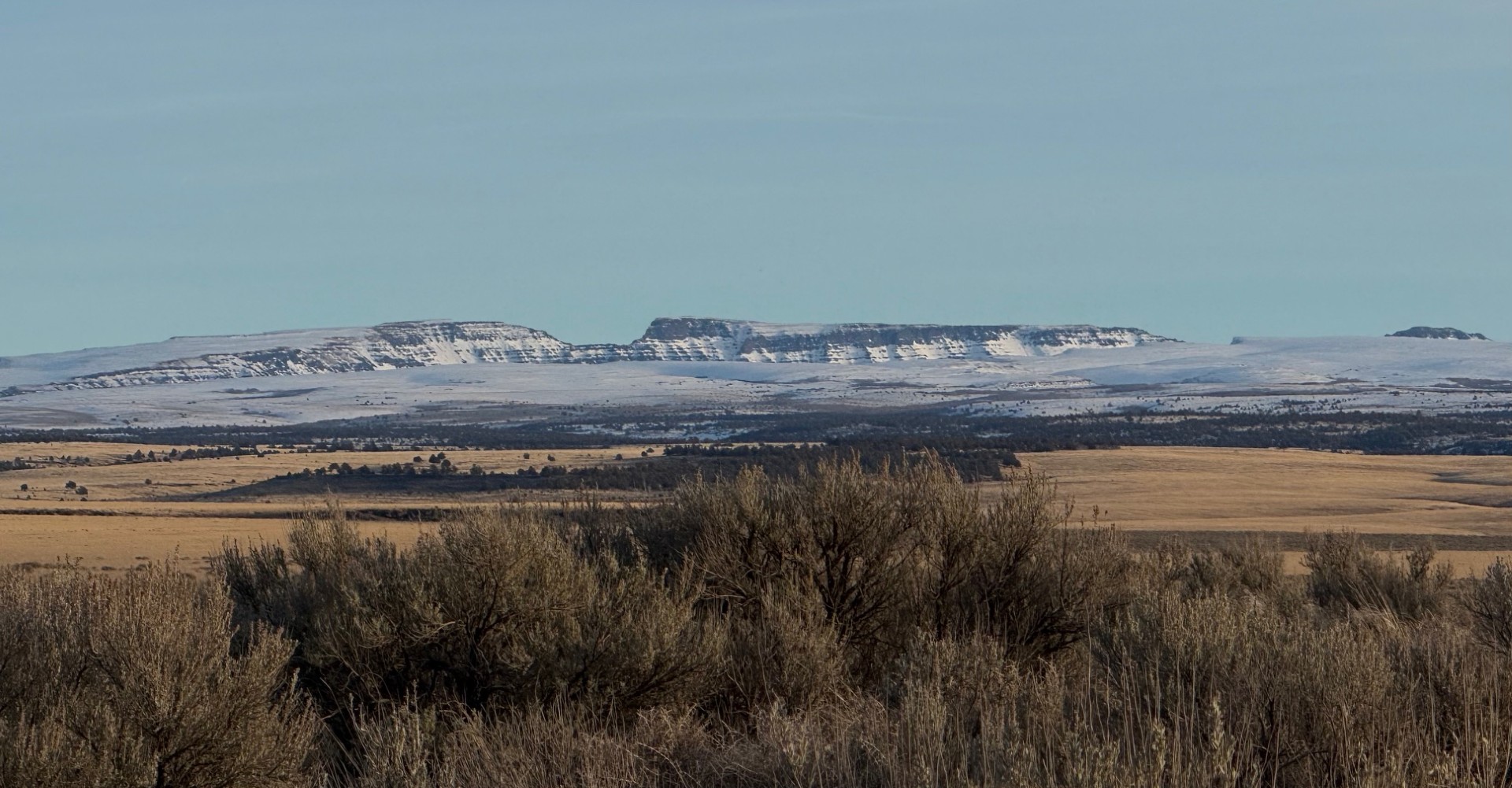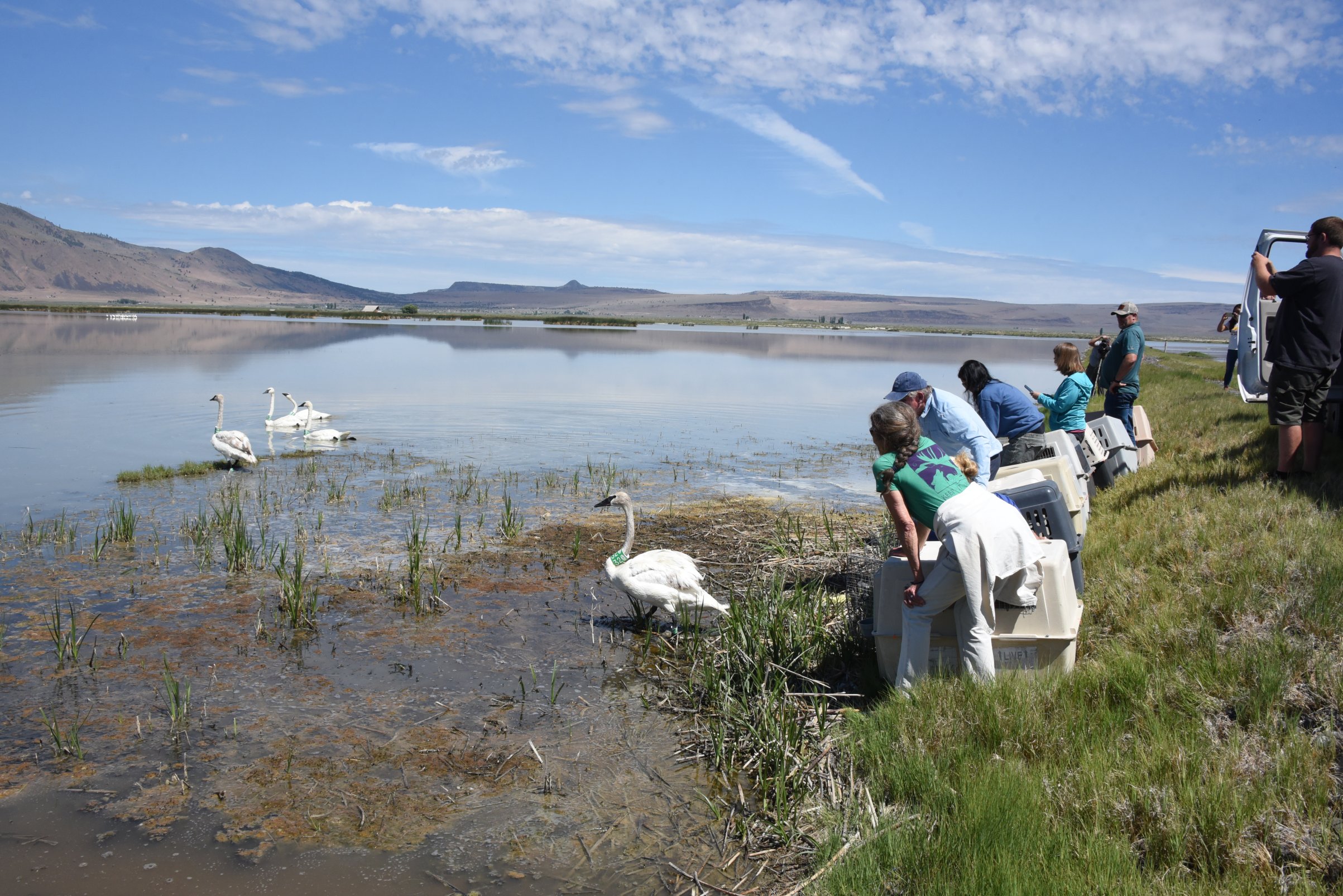By Teresa ‘Bird’ Wicks, Eastern Oregon Biologist, Bird Alliance of Oregon
In 2021, we partnered with the refuge and Harney Basin Wetlands Collaborative partners to pilot an effort using autonomous recording units (ARU) to expand monitoring efforts in the Harney Basin. Despite some glitches, the ARUs were successful enough that in 2022 Malheur National Wildlife Refuge purchased 10 ARUs to expand passive acoustic monitoring (PAM) to 16 sites in the Buena Vista subregion. This year our PAM work expanded exponentially, and we now have four PAM projects. These projects include:
1) 32 sites in wet meadow, upland, and woody riparian habitat from Sod House Ranch south to P-Ranch;
2) Tern Island monitoring;
3) a reed canarygrass and climate study that has seven sites in the Silvies Floodplain and five sites at Malheur National Wildlife Refuge; and
4) an off-refuge Harney Basin Wetlands Collaborative supported project monitoring birds in the wet meadows of Oregon Desert Land Trust’s Trout Creek Ranch south of Fields.
These data are processed using a multi-phase protocol. In Phase 1 (Listening Phase) we have staff and trained volunteers listen to recordings and document each individual of each species when they are first heard. This is similar to conducting an on-the-ground point count but at your computer instead of in the field. During Phase 2 (recognizer with validation) we run all recordings through BirdNet – Analyzer (the base AI for the Merlin App) and validated each species not detected in Phase 1. From there we can calculate relative abundance, diversity, and other community metrics.
In 2022 some of the more interesting findings included American Avocet at each of the 16 sites that we monitored, Eared Grebes that sounded like there were nesting near one site (we’re still not sure where!), post-breeding season movement of upland birds like Sagebrush Sparrow and Sage Thrasher and of Bobolink (including a young male practicing his song!), and a July movement of Marsh Wrens that we think is indicative of second territories and second nest attempts. We’ve also documented Townsend’s Warblers in riparian areas during migration and a late season Grasshopper Sparrow. For now, most of this information is only helpful for forming questions, or making fun observations. As we finish processing the 2023 data and start processing the 2024 data we may see stronger patterns emerging that can better provide information for managers and conservation efforts.
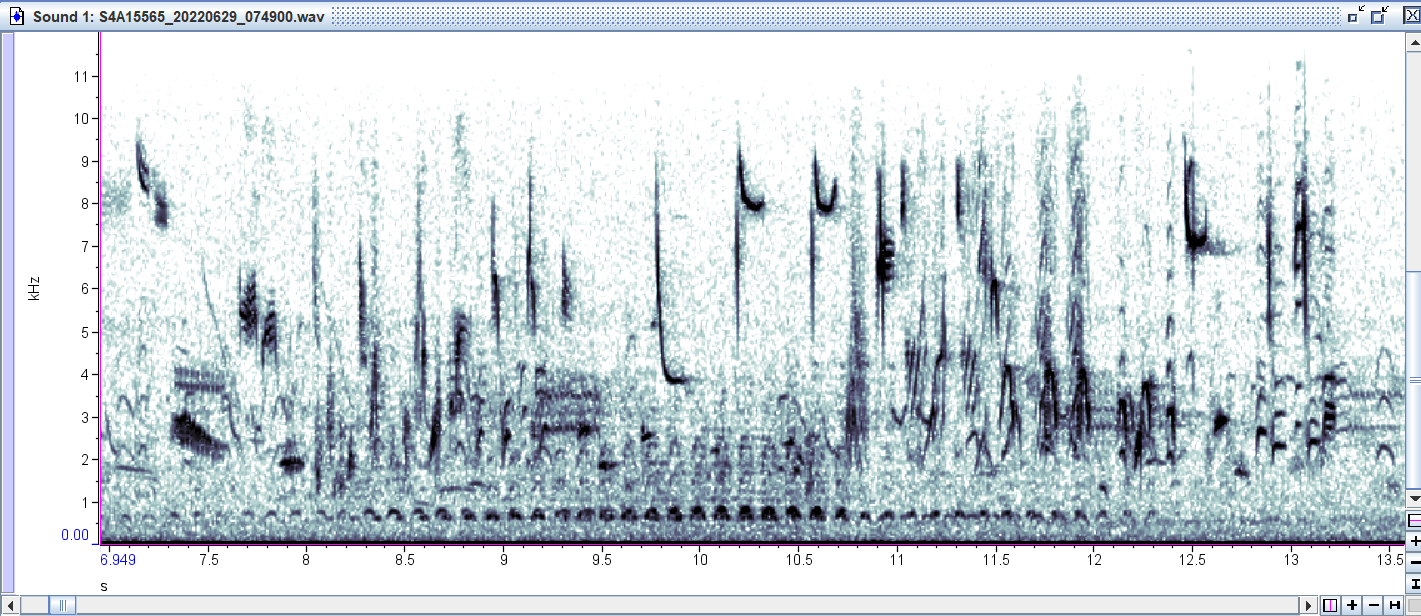
How can you support the PAM efforts happening at Malheur and in the greater Harney Basin? Consider volunteering your time to help with the “Listening Phase” of these projects. Using this protocol each site takes less than 8 focused hours to process. When we first started processing data each site often took more than 40 hours to process. Though we’ve greatly reduced the processing time per site, we’re still planning on recruiting volunteers to assist with processing data. The web-based platform that we use for the Listening phase is accessible from anywhere an individual has wifi access. We will be offering two in-person trainings, one in Portland and one in Bend in September. Through these training volunteers will learn how to use the web-based platform, get support for bird ID, and learn how these PAM projects are supporting adaptive management for conservation values across the Harney Basin.

